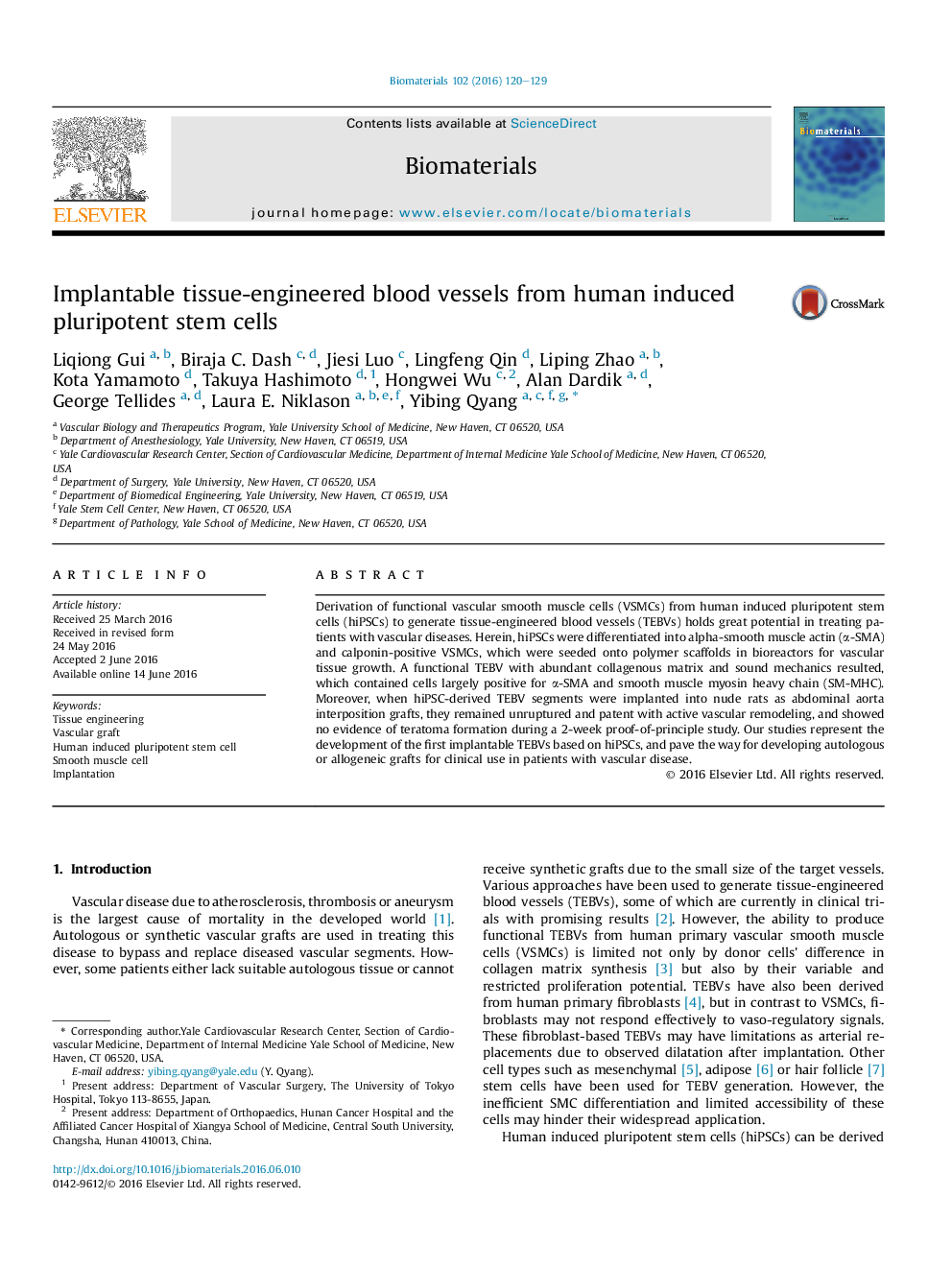| Article ID | Journal | Published Year | Pages | File Type |
|---|---|---|---|---|
| 5312 | Biomaterials | 2016 | 10 Pages |
Derivation of functional vascular smooth muscle cells (VSMCs) from human induced pluripotent stem cells (hiPSCs) to generate tissue-engineered blood vessels (TEBVs) holds great potential in treating patients with vascular diseases. Herein, hiPSCs were differentiated into alpha-smooth muscle actin (α-SMA) and calponin-positive VSMCs, which were seeded onto polymer scaffolds in bioreactors for vascular tissue growth. A functional TEBV with abundant collagenous matrix and sound mechanics resulted, which contained cells largely positive for α-SMA and smooth muscle myosin heavy chain (SM-MHC). Moreover, when hiPSC-derived TEBV segments were implanted into nude rats as abdominal aorta interposition grafts, they remained unruptured and patent with active vascular remodeling, and showed no evidence of teratoma formation during a 2-week proof-of-principle study. Our studies represent the development of the first implantable TEBVs based on hiPSCs, and pave the way for developing autologous or allogeneic grafts for clinical use in patients with vascular disease.
